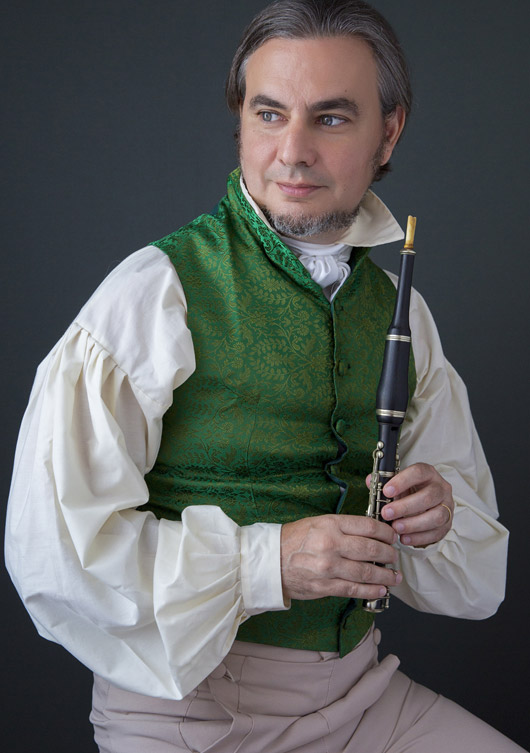
French Flageolet
The French flageolet is a near cousin to the recorder. However, it contains only 6 holes: 4 on top for the index and middle fingers of both hands, and two holes below for the thumbs. It is an instrument with a very long uninterrupted history which began in the Sixteenth Century and continued until the beginning of the Twentieth Century.
Unlike the czakan whose repertoire was geared towards chamber music, demonstrating a very intimate style, the French flageolet was used in orchestral parts. It is believed that much of the repertoire which is played today by the piccolo was originally designed for the flageolet.
The first flageolets were very similar to recorders in form. Only at the end of the Eighteenth Century did they begin to be built with a type of barrel on the upper part that, together with a windcap and a mouthpiece made of ivory, bone, or mother-of-pearl in the shape of an oboe reed (with no vibratory function nonetheless), practically doubling the instrument’s size. A small sea sponge piece was inserted into the windcap to create a more delicate and homogeneous sound to the instrument, while it also prevented condensation in the block, a problem which recorders of all types experienced.
In the Nineteenth Century the instrument began to be built with keys until it reached its apogee with the Boehm system (the same used by clarinetists to this day). The flageolet was beloved in Paris and was an integral part of the instrumental formation for quadrilles which were played in big ball rooms along with the flute, violin, piano, and trumpet (the latter ad libitum).
With the turn of the century and the decline of balls, the flageolet started to be used increasingly less often until it disappeared entirely. Besides its orchestral and ballroom repertoire, there is a considerable number of solo pieces dedicated to this instrument. Narcisse Bousquet (? – 1869) was likely its most important exponent with excellent examples of virtuosity achieved by this instrument such as his Studies and Grands Caprices.